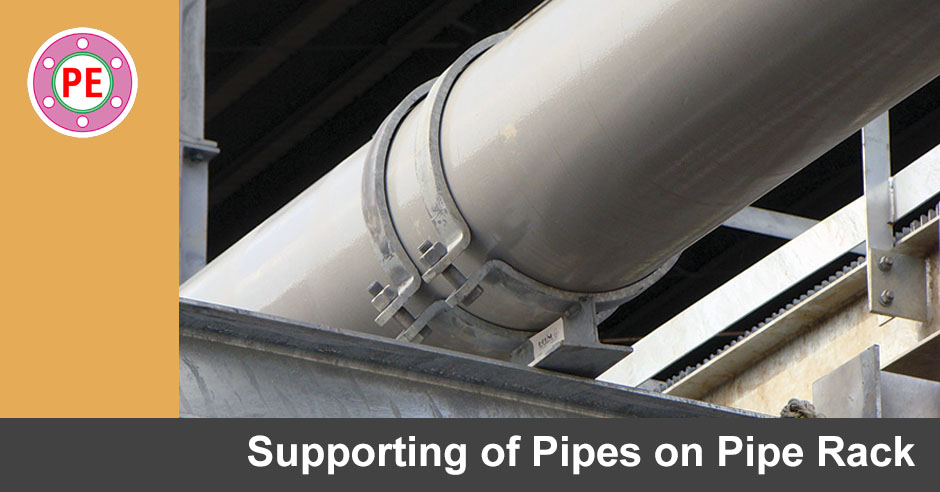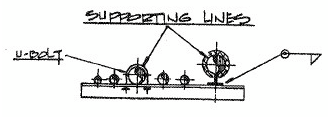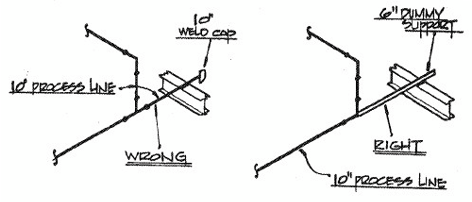Supporting of piping on Pipe Racks and Pipe Ways involves providing rest, guides, limit stops and anchors in a piping header.

Guides
Guides on a pipe header shall be arranged as shown in following diagram.


| NPS | 2″ to 3″ | 4″ to 6″ | 8″ to 14″ | >= 16″ |
| L : Meters | 3 to 4 | 6 to 8 | 12 to 16 | 12 to 16 |
| L1 : Meters | 6 | 8 | 14 | As per Stress Anslysis |
[google-square-ad]
Notes :
- “L1” is the minimum length necessary to permit the piping maximum thermal expansion of 120 mm.
- “B” is the dimension of loop as per stress analysis.
- Pipe racks and pipe ways usually have spans of 6 to 8 Meters. So for pipes 6″ and smaller, guides are required on each main beam. For pipes more than 6″ NPS, guides on alternate beams can be provided.
Rest Supports
Maximum distance between supports shall not be higher than allowed particular material of construction at particular operating conditions. Refer company standards for the same.
- Maximum allowable spans for metallic piping.
- Maximum allowable spans for Cupro-Nickel Piping
- Maximum allowable spans for Plastic Piping.
Sloped Piping
For all pipes which require a slope towards a definite direction, the max allowable span should be such that max deflection of pipe is less than the level difference between two adjacent support points, in order to avoid pockets.
Supporting Small lines from Big Lines
For small bore piping, intermediate supports from adjacent large bore piping may be required as an allowable span for small bore piping can be is less than the distance between two consecutive supports.
Following figure shows how larger lines in a pipe rack are used to support a group of smaller lines that may not be adequately supported because of the bent spacing.

The un-insulated line is U-bolted to the supporting steel; the insulated line has its shoe welded to the steel.
The smaller lines then rest on the steel. When an insulated line is used for support, the growth of the line at the proposed support point must be checked. Its growth could become restricted by this type of support, and it may be better to use another line for this application.
The adjacent pipe chose as a supporting pipe must have diameter at least three sizes greater than the supported pipe, and never less than 4″.
Example :
- Supporting Pipe : 4″ / 6″ / 8″
- Corresponding Supported Pipe : 1.5″ / 2″ / 3″
Using Dummy Support
Following figure shows the correct way to support a line that has exceeded its allowable span.

A common mistake is to extend the 10-in process line over the rack bent and cap it, when the line should have been run as if a support problem did not exist.
A smaller piece of pipe or dummy leg could then be welded to the elbow for support (a hole should not be cut in the process line).
